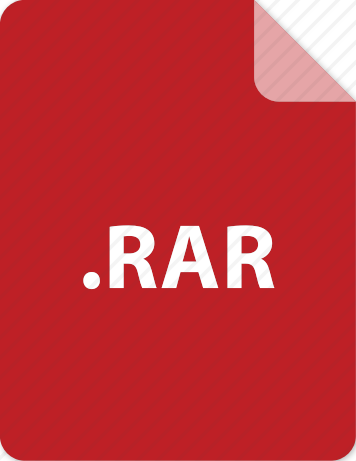
 七年级英语下册 NSE module7教案 外研版.doc
七年级英语下册 NSE module7教案 外研版.doc
《七年级英语下册 NSE module7教案 外研版.doc》由会员分享,可在线阅读,更多相关《七年级英语下册 NSE module7教案 外研版.doc(8页珍藏版)》请在咨信网上搜索。
MODULE 7 TEACHING PLAN 一、题材内容 本模块话题是“旅游与交通”。语法重点是学习形容词最高级形式和by+交通工具的用法,围绕旅游与交通开展听、说、读、写的课堂活动。要求学生通过对形容词最高级形式的操练,能够就相关话题进行问答,能够描述自己或他人的旅行。在阅读过程中,学会应用寻找细节的阅读技巧, 能将标题与段落, 单词与释义相匹配。教学中教师应随时随地以课本为出发点,灵活利用各种素材组织教学过程和内容。充分调动学生的积极性。 教学目标 1) 语言知识: 语音 形容词最高级形式的发音 词汇 journey, ferry, subway, taxi, crowded, modern, farthest, best, most, close, stop, terminal, British, airway, express, star, take, passenger, airline, distance, hour, quick, way, fare, know 词组 bus stop, ferry terminal, by bicycle/bus. 语法 形容词最高级、by+交通工具 功能 三者或更多事物之间的比较 话题 以“旅游与交通”为话题。 2) 语言技能: 听 能听懂含有形容词最高级形式的对话以及对交通工具的描述. 说 能运用形容词最高级形式谈论乘坐的交通工具。流利的说出生词、短语。 读 能读懂有关旅游和交通的短文,并且将标题和段落相匹配; 理解阅读材料中所学的形容词最高级所表达的语义。在阅读中学会应用寻找细节的阅读策略,进行简单的阅读技能训练。 写 能用形容词最高级形式描写旅行。 演示与表达 能向同学们介绍自己或他人的旅行以及乘坐的交通工具。 3)学习策略: 一定程度形成自主学习,有效交际、信息处理、英语思维能力。 认知 联系,归纳,推测等技能。观察并归纳形容词的最高级的变化规则,提高自学能力。 调控 从同伴处得到反馈,对自己在叙述及作文中的错误进行修改。 交际 学习运用恰当词语简单描述旅游交通。 资源 通过其他资源获取更多有关“旅游交通”的简单英语。 自学策略 培养在词语与相应事物之间建立联想的习惯,形成话题联想的习惯。能注意发现语言现象背后的规律,并能运用规律举一反三。 合作学习策略 互相学习,取长补短,注意学习策略共享, 将自己所搜集的信息与其他同学共享。 4)文化意识: 中外对比 主动理解英语国家有关旅游交通等方面的信息,并密切联系自己的日常生活,从而拓展视野,激发学习英语的兴趣。 5)情感态度: 通过学习描述旅游交通,提高对旅游和英语的学习兴趣。参加各种英语活动,克服困难,在新环境中进一步树立准确的语言学习观。 6)任务: 能够根据表格分析数据,并谈论相关信息。 教学重点和难点 重点:掌握描述旅游交通的基本词汇,读懂含有形容词的最高级的句子,掌握形容词的最高级的结构和用法。 难点:掌握形容词最高级的结构和用法。 教学方法 运用任务型教学途径,围绕核心任务,设定小任务,开展和谐愉悦的课堂活动,强调兴趣第一的原则,初步设计“P—T—P”自主学习立体模式:pre-task…task-cycle…post-task。 二、教材处理 核心任务: 能够运用所学句型结构描述旅游交通。三个环节如下: pre-task: 学生联系生活实际,激活背景知识,。 task –cycle:通过整个模块的听说读写的训练,强化对“旅游交通”的表达能力,为完成任务做好铺垫 post-task: 达成任务,展示成果,反馈学习情况 三、教材安排 根据学生学习英语的特点和规律,我把本模块划分为4课时: Period 1: Listening and Vocabulary &Pronunciation and Speaking Period 2: Reading and Vocabulary Period 3: Writing& Around the world &Module Task Period 4: Language in use 教学时应根据学生的学习水平、生活实际水平、接受程度及课堂出现的临时状况进行运用、调整及筛选。 四、教学设计 Module 7 Planes, boats and trains Period 1 Listening and Vocabulary &Pronunciation and Speaking Teaching Aims and Demands: 1. Language Knowledge Key vocabulary and phrases: journey, ferry, subway, taxi, crowded, modern, farthest, best, most, close Key structure: by bus/ train/ taxi… (重点) 2.Listening skill: To understand conversations with superlative adjectives. (难点) 3.Speaking skill: To ask and answer about transport and travel 4. Affection and attitudes: Choose the right transport form to travel. Teaching Aids: Multi-Media (Tape recorder, video等) Teaching Procedures: Part I: Revision Part II: Lead in: Task : Introduce to them the new words in activity 1 on Page 44. Step 1 Ask the students how they got to school. And list their answers on the board. Step 2 Ask for other ways to travel and list those, too. Step 3 Show the pictures of the means of transportation, and ask Ss to talk about what they can see through the pictures. Part III: Listening Task 1: Listen to the quiz .Match the words in 2 boxes. Then match them with the pictures. Step 1 Read the lists of words and have the students repeat them after you. Step 2 Listen to the tape and match the words in Box 1 with the words in Box 2. Task 2: Discussion---Activity 3 Step 1 Read through the phrases with “by” in activity 3 on Page 45. Step 2 Ask the Ss to ask and answer “How do you go to school? Task 3: Introduce to them the superlative degree of adjectives in English. Step 1 Elicit a few common adjectives from the Ss, and write them on the blackboard. Step 2: Change them into superlative degree Step 3: Write a sentence for each one, e.g. Step 4: Show the Ss. the structure and explain when we use this construction. We may elicit other adjectives and some other examples of superlative degree from the Ss. Task 4: To understand conversation. Step 1: Give the Ss 2questions: How does Tony get to school? Does Dad always go to work by taxi? Make sure the Ss. understand the question: Step 2: Play the recording and have them listen. Step 3: Play the recording again and have them write the answers individually. Step 4:. Have them check their answer with a partner and Call back the answer from the whole class. Task5: Activity 5 on Page 45. Step 1: Play the recording again and have them write a name in front of each sentence individually in Activity 5. Have them check their answers with a partner Step 2: Play the recording again . Have them check their answers with a partner Step 3: Call back the answer from the whole class. Task 6: Listen and read: Step 1: Play the recording and ask the Ss. to listen and read the conversation. Step2: Play the recording again and pause after each phrase, asking the Ss. to repeat chorally and individually. Step3: Put the Ss. into groups of 2 to practice the dialogue. Step4: They should repeat it several times, changing the roles each time. Part IV: Pronunciation Task: Listen and repeat the sentences in Activity6、7、8 Step 1: Play the recording and ask the Ss. to listen and repeat the sentences in activities. Step 2: Ask the Ss to work in pairs to check their answers to activity 5. Step 3: Work in pairs to do activity 8. Part V Homework: Recite the short dialogue as fluently as possible. Copy the new words and finish the exercise in the workbook. 教学后记: Period 2 Vocabulary and Reading Teaching Aims and Demands: 1. Language knowledge: New words: stop, terminal, British, airway, express, star, take, passenger, airline, distance, hour, quick, way, fare Key structures: It goes from Shanghai Station to the Pudong Airport in 8 minutes. The same journey takes about 30 minutes by car. (重点) 2. Reading skill: To get information from the reading material about traveling times. 3. Affection and attitudes: Choose the right transport form to travel. Teaching Aids: Multi-Media (Tape recorder, video等) Teaching Procedures: Part I: Revision 1. Help students to revise what is learnt in Period one of this module. Show them some pictures about the new words in last period. Have the Ss. spell them chorally and individually. 2. Revise the superlative degree of adjectives Part II :Preparation Task 1: Learn the new words. Label the pictures with the words. Step 1. Read through the words on the screen. Have the Ss. repeat them after you. Step 2 Read the words separately and have them remember them. Task 2: Which words can you use to describe the picture? Step 1: Ask the Ss to do this individually, then check their answers with a partner. Step 2: Ask the Ss to say what they can see in the picture. Part III: Scanning and Skimming Task 1: Read the passage and match the paragraphs with the headings. Step 1 Read through the headings, then ask the Ss to read and match individually Step 2 They can check their answers with a partner. Step 3 Collect the answers from the class. Task 2 : Read the passage and check the true statements. Reading and checking Step 1: Ask the Ss to do this individually, then check their answers with a partner. Step 2 :Collect the answers from the class. Task3: Match the words with their meanings. Reading and filling. Step 1 Read through the words and have the Ss repeat them chorally and individually. Step 2 Take care with “international”, to get the stress on the third syllable. Step 3 Decide if you want the Ss to use dictionaries to find out the meanings of unknown words. Step 4 Ask the Ss to match individually, then check their answers with a partner. Part IV : Dealing with expressions: 1 It goes from Shanghai Station to Pudong Airport in 8 minutes. 从上海车站到浦东飞机厂用8分钟. From…to…从…到… in 多长时间之内 如: He can count from 1 to 100.他能从1数到100. He will be back in 2 hours.他2小时之内回来. 2.The same journey takes about 30 minutes by car. 相同的路程乘小轿车约需30分钟。 take 是动词,表示“花费或需要用一定的时间”如: The trip takes 2 weeks.旅程需要2个星期。 注意句型: It takes sb. some time to do sth.干某事需要某人多长时间. It takes her an hour to finish the work. 她需要一个小时干完这项工作。 3.The most popular plane is the Boeing 747.最受人们欢迎的飞机是波音747。 美国的波音公司和欧洲的空中客车公司是世界上最著名的客机生产商。波音公司的民用飞机产品中最著名的有波音737,747,757,767等。 4.It goes from London to Beijing , a distance of over 8000 kilometres in 9 1/2 hours. 它从伦敦飞往北京,其间8000 多公里的距离用9个半小时就可完成。 本句中9个半小时的读法是 注意:整数与分数之间在读的时候必须用 连接。如: 3 1/2 three and a half days三天半 2 1/2 two and a half weeks两周半 5.The fares aren’t expensive. 票价不贵。 fare是(公共汽车、火车、计程车等的)车费,(飞机等的)票价。如: Train fairs are going up again.火车票价又要涨了。 I can pay his plane fare.我可以为他付飞机票钱。 Part V: Homework: Copy the new words and finish the exercise in the workbook. Recite the text 教学后记: Period 3 Writing & Around the world &Module Task Teaching Aims and Demands: 1.Writing skill: to transfer information from a table to sentences and to give results with “so”. Improve the students’ writing ability (难点). 2. To learn about the longest railway journey 3. To summarize and consolidate “by+ means of transport” and the superlatives. (重点) 4.Affection and attitudes: Choose the right transport form to travel. Teaching Aids: Multi-Media (Tape recorder , video等) Teaching Procedures: Part I: Revision Task: Help students to revise what is learnt in the last period. Step 1 Revise the words and phrases. Step 2 Put the Ss. in pairs to practice the dialogue and the text. Part II: Writing Task 1: Use the data to answer the questions in Activity 5 Step 1: Run through the examples with the Ss. and make sure that they understand them. Step 2: Ask the Ss to write the answers individually and check their answers with a friend. Step 3: Collect the answers from the class and write them on the board. Step 4: Read them loudly. Task 2: Write sentences about local journeys they know about in the same way Step 1: Give them some examples and make sure that they understand them. Step 2: Ask the Ss to write sentences with a partner Step 3: Call back a few examples from the whole class, and write them on the board. Step 4: Then summarize Part III: Around the world Task: Learn something about the longest railway journey Step 1: Ask the Ss to look at the different pictures about The longest railway journey Tell the Ss. some knowledge about them. Step 2: Read the text and answer any questions the Ss have. Part IV: Module Task Interpreting data Activity 6 on Page 49. 1. Ask the Ss. to talk about the journey. 2. Pair the Ss to complete the answers. 3. Circulate and monitor their production. 4. Talk about the journey from Beijing to Jinan. 5. The Ss write an article comparing the different ways of traveling from Beijing to Jinan. Part V: Recalling Recall what we have learned today. Part VI: Homework Finish the exercise in the book and the workbook. 教学后记: Period 4 Language in use Key structures: “by+ means of transport” and the superlatives. (重点) Teaching Aims and Demands: 1. To summarize and consolidate grammar focus. 2. To summarize and consolidate expressions and vocabulary. Affection and attitudes:. Choose the right transport form to travel. Teaching Aids: Multi-Media (video等) Teaching Procedures: Part I: Revision Help students to revise what is learnt in 3 periods of this module. Part II Language practice Task1: To summarize and consolidate the usage of the structure: “by+ means of transport” and the superlatives. Step 1 Run through the examples with the Ss. Make sure that they are familiar with the use of the structure: “by+ means of transport” and the superlatives. . Step2 Pay attention to some special words. Eg. far-farther-farthest , good-better-best Task2: Write and answer questions Step 1 Do activity 1、2 and 3 on Page 48. Step 2 Ask the Ss. to call out the answers from the whole class. Step 3 Ask the Ss. to read the completed sentences. Task 3: Complete the word map with these words. Step 1 Ask the Ss to complete the word map individually before comparing answers in pairs. Step 2 Collect the answers from the class. Part III:Complete the sentences with the correct form of the adjectives. Step 1 Read through the adjectives, and check the Ss’ pronunciation and comprehension. Step 2 Ask them to do the exercise individually, then check with a partner. Part VI: Homework: Finish the exercise in the book and the workbook. 教学后记:- 配套讲稿:
如PPT文件的首页显示word图标,表示该PPT已包含配套word讲稿。双击word图标可打开word文档。
- 特殊限制:
部分文档作品中含有的国旗、国徽等图片,仅作为作品整体效果示例展示,禁止商用。设计者仅对作品中独创性部分享有著作权。
- 关 键 词:
- 七年级英语下册 NSE module7教案 外研版 年级 英语 下册 module7 教案
 咨信网温馨提示:
咨信网温馨提示:1、咨信平台为文档C2C交易模式,即用户上传的文档直接被用户下载,收益归上传人(含作者)所有;本站仅是提供信息存储空间和展示预览,仅对用户上传内容的表现方式做保护处理,对上载内容不做任何修改或编辑。所展示的作品文档包括内容和图片全部来源于网络用户和作者上传投稿,我们不确定上传用户享有完全著作权,根据《信息网络传播权保护条例》,如果侵犯了您的版权、权益或隐私,请联系我们,核实后会尽快下架及时删除,并可随时和客服了解处理情况,尊重保护知识产权我们共同努力。
2、文档的总页数、文档格式和文档大小以系统显示为准(内容中显示的页数不一定正确),网站客服只以系统显示的页数、文件格式、文档大小作为仲裁依据,个别因单元格分列造成显示页码不一将协商解决,平台无法对文档的真实性、完整性、权威性、准确性、专业性及其观点立场做任何保证或承诺,下载前须认真查看,确认无误后再购买,务必慎重购买;若有违法违纪将进行移交司法处理,若涉侵权平台将进行基本处罚并下架。
3、本站所有内容均由用户上传,付费前请自行鉴别,如您付费,意味着您已接受本站规则且自行承担风险,本站不进行额外附加服务,虚拟产品一经售出概不退款(未进行购买下载可退充值款),文档一经付费(服务费)、不意味着购买了该文档的版权,仅供个人/单位学习、研究之用,不得用于商业用途,未经授权,严禁复制、发行、汇编、翻译或者网络传播等,侵权必究。
4、如你看到网页展示的文档有www.zixin.com.cn水印,是因预览和防盗链等技术需要对页面进行转换压缩成图而已,我们并不对上传的文档进行任何编辑或修改,文档下载后都不会有水印标识(原文档上传前个别存留的除外),下载后原文更清晰;试题试卷类文档,如果标题没有明确说明有答案则都视为没有答案,请知晓;PPT和DOC文档可被视为“模板”,允许上传人保留章节、目录结构的情况下删减部份的内容;PDF文档不管是原文档转换或图片扫描而得,本站不作要求视为允许,下载前自行私信或留言给上传者【s4****5z】。
5、本文档所展示的图片、画像、字体、音乐的版权可能需版权方额外授权,请谨慎使用;网站提供的党政主题相关内容(国旗、国徽、党徽--等)目的在于配合国家政策宣传,仅限个人学习分享使用,禁止用于任何广告和商用目的。
6、文档遇到问题,请及时私信或留言给本站上传会员【s4****5z】,需本站解决可联系【 微信客服】、【 QQ客服】,若有其他问题请点击或扫码反馈【 服务填表】;文档侵犯商业秘密、侵犯著作权、侵犯人身权等,请点击“【 版权申诉】”(推荐),意见反馈和侵权处理邮箱:1219186828@qq.com;也可以拔打客服电话:4008-655-100;投诉/维权电话:4009-655-100。
关于本文





 八年级地理上册 第四章 第三节 青藏地区和西北地区 教案课件同步练习(打包3套) 湘教版-湘教版初中八年级全册地理教案.rar
八年级地理上册 第四章 第三节 青藏地区和西北地区 教案课件同步练习(打包3套) 湘教版-湘教版初中八年级全册地理教案.rar
 一道平面几何题的演变1 初三数学一道平面几何题的演变(ppt课件、doc教案) 人教版.doc
一道平面几何题的演变1 初三数学一道平面几何题的演变(ppt课件、doc教案) 人教版.doc
 鳊花鱼及图片.pdf
鳊花鱼及图片.pdf
 实名认证
实名认证













 自信AI助手
自信AI助手


















 微信客服
微信客服 客服QQ
客服QQ 发送邮件
发送邮件 意见反馈
意见反馈







